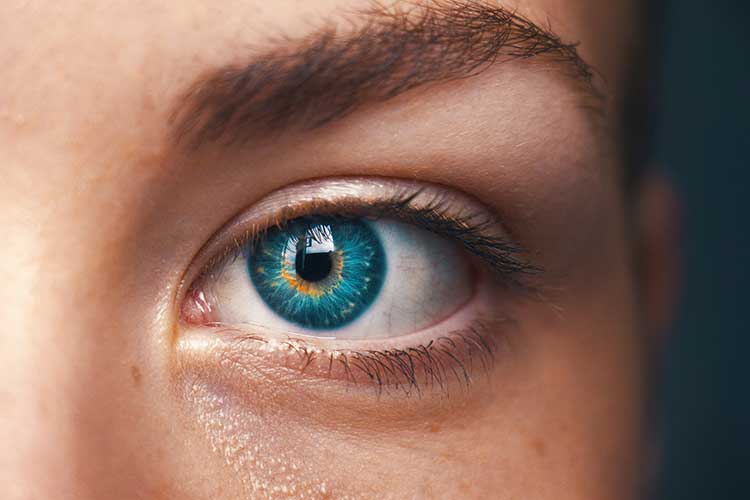With so many people wearing contacts nowadays, I have had a number of people ask me how wearing contacts can or may affect their ability to take good photos.
Can you take photos wearing contacts? Taking photos while wearing contacts is completely safe of course, as long as the lenses fit the appropriate prescription and are used correctly. In fact, contact lenses provide a solution to the long-time problem of wearing eyeglasses while operating a camera for many photographers.
For years, many photographers have complained about the nuisance of wearing eyeglasses while taking photos with digital cameras. Not only do the glasses obstruct the view of their subjects, but the lenses can sometimes suffer damage over time from the constant friction against the back of the camera. Could wearing contact lenses instead offer a solution to this problem, or would it just raise additional concerns?
Contents
The Problem with Eyeglasses and Photography
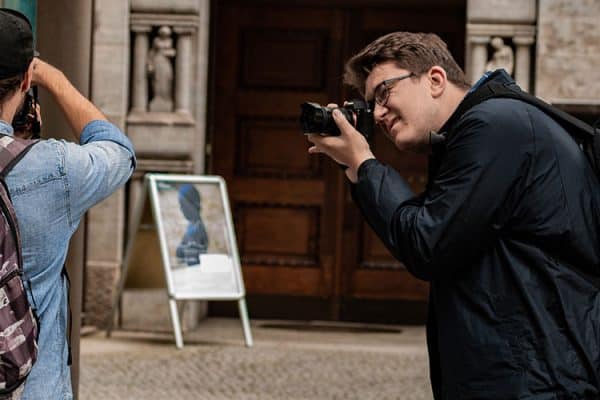
Taking a photograph with almost any type of digital camera will require looking through the viewfinder (the hole that is located behind the lens of the camera that allows the photographer to look directly at their subject before snapping the picture). In order to produce the best result, the photographer must place their dominant eye almost directly onto the viewfinder to be able to clearly see what will be reflected in the photograph. If the eye is positioned too far away from the hole, the photographer will not have as clear of a view as they could and will likely miss out on details that could have been corrected before the photo was taken. As a result, it can be difficult for a photographer to see their subject clearly before taking a picture.
This can be a problem for photographers who wear prescription eyeglasses because the lenses will come between the eye and the viewfinder, obstructing the path of vision through the lens of the camera. Many photographers with this issue complain that the glasses frequently hit the back of the camera and ultimately get in the way during photo sessions. Not only that but with constant contact between the back of the camera and the lens, the glasses can begin to show scratches and other signs of wear. This can result in more frequently paying to repair the lenses or to completely replace them with a new pair of eyeglasses.
Most digital cameras come with a piece called a diopter, which is a small dial that is directly connected to the viewfinder. This allows the photographer to adjust the sharpness and focus of the lens to replicate the view they would have with their eyeglasses on. The adjustment of this feature will essentially match the eyesight of the person who is taking the photograph without altering how the camera lens captures its own view. With that being said, there is always the temporary solution of removing the eyeglasses during a photo shoot or simply not wearing them at all with the proper diopter adjustment levels. However, this will limit the photographer’s sight when they are not looking directly into the camera lens. Additionally, the viewfinder can only be sharpened and adjusted up to a certain point. In fact, if the photographer’s eyeglass prescription is higher than the average, they will reach a point where the diopter can no longer be adjusted to help them see through the viewfinder alone. Even when the use of the diopter is able to help the photographer see without their glasses, it can become distracting to constantly have to take them on and off while trying to get a job done simultaneously.
To remedy this, some products have hit the market to provide somewhat of a temporary solution. Corrective lenses, for example, can be purchased and placed over the viewfinder. These lenses magnify the view through the camera’s lens and allow the photographer to clearly see their subjects without the need to wear eyeglasses. However, this option still poses another problem for those with more severe or specific vision impairments. Although these attachments come in all different types of shapes, sizes, and prescriptions, it is not a “one size fits all” kind of product. Those who suffer from astigmatism or require special bifocal lenses will likely not find much use for these tools. So, is there a more convenient solution for visually-impaired photographers?
Contact Lenses: A Potential Solution
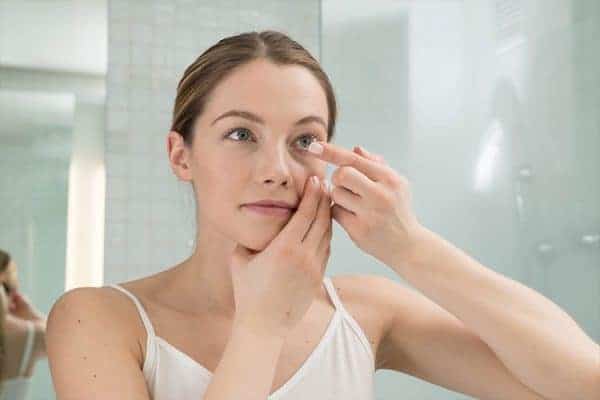
Many people choose to use prescription contact lenses as an alternative to eyeglasses due to the benefits that come with them. First of all, contact lenses provide a clear field of vision with no obstructions since they conform to the eye and move with it. Since they rest against the surface of the actual eyeball itself, there is no risk of the lens becoming foggy or unclear in any way due to finger smudges or other splattered materials that frequently come in contact with eyeglasses. Contact lenses are often used by people who play sports or exercise regularly to avoid the annoyance of eyeglasses slipping down their noses or falling off of their faces during movement. They are recommended by doctors for any kind of physical activities, which include photography.
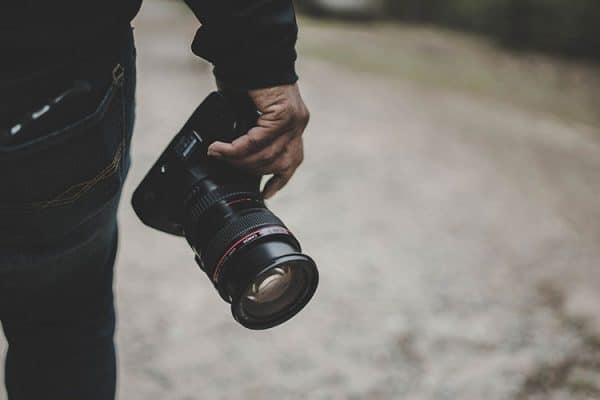
Contact lenses offer a higher level of convenience to users than glasses, because they are able to experience a sharp view through the prescription they need without the obstructive frames. The lenses require fairly low maintenance as well. The short process contact users are tasked with is placing them into the eyes in the morning and taking them out to be cleaned at night. In addition, most people who wear contacts report that they do not feel them in their eyes throughout the day. There are multiple brands and styles of contacts to fit the preferences and prescriptions of each individual, as well as provide comfort and prevent damage to the outer surface of the eyes.
The use of contact lenses can be highly beneficial to photographers who are frequently looking at the world around them through the viewfinder of their cameras. With the newly increased sharpness of their vision, there will be no need to wear annoying frames or adjust the diopter levels of the camera. There is also no need to try to find a specific corrective lens piece that will fit their vision perfectly because the contact lenses will already do that. Now, the only question left to answer is are there any disadvantages or potential dangers that can come with using contact lenses to take photographs?
How to Safely Use Contact Lenses For Photography
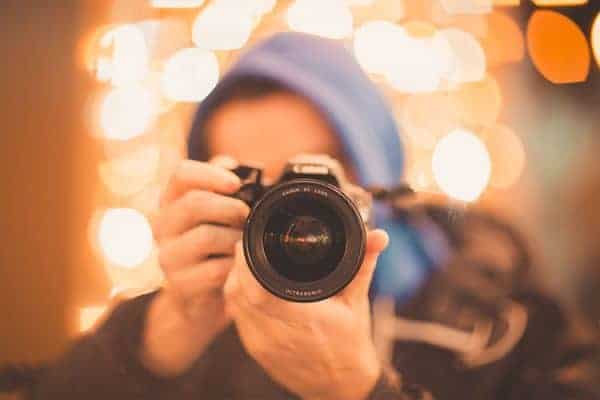
Although there are plenty of benefits and conveniences that come with using contact lenses in replacement of prescription eyeglasses, there are certain precautions that should be taken in order to avoid any damage to the eyes. First of all, the prescription that is used in the contacts should be accurate to the individual to eliminate any strain to the eyes. This may seem fairly obvious and unnecessary to mention, but an incorrect contact prescription can cause more problems than it can solve. As a result, when consulting with your eye doctor, you should always be honest and speak up about anything that needs adjusting before you leave your appointment. After all, only you can see through your own eyes.
When the contact lenses are in your possession, it is very important to always make sure they are properly cleaned. This is usually done in the nighttime when the lenses are taken out and placed into a cleaning solution. Depending on the exact type of contact lenses you receive, the doctor will give you specific instructions for how to maintain them.
Many photographers have reported wearing contact lenses while taking photos has helped them out tremendously. They have eliminated the nuisance of eyeglass frames sliding everywhere and hitting the back of the camera, as well as collecting smudges and scratches on the surface of the lenses that obstruct the photographer’s view. Additionally, there is no need to adjust the diopter or purchase any additional pieces to aid vision impairment, because the photographer will already be able to see as clearly as possible with the use of their new contact lenses.
Another common issue that a lot of visually-impaired photographers have complained about in the past is specific prescription needs such as astigmatism and the need to wear bifocal lenses. This problem can also be easily solved with the use of contact lenses, due to the fact that a variety of different prescription options are offered. Unlike the limitations that are caused by the corrective lens pieces that only provide solutions to a select percentage of eyeglass users, contacts are tailored to every individual. There are plenty of different types of contact lenses for disorders like astigmatism, as well as special bifocal and progressive lenses.
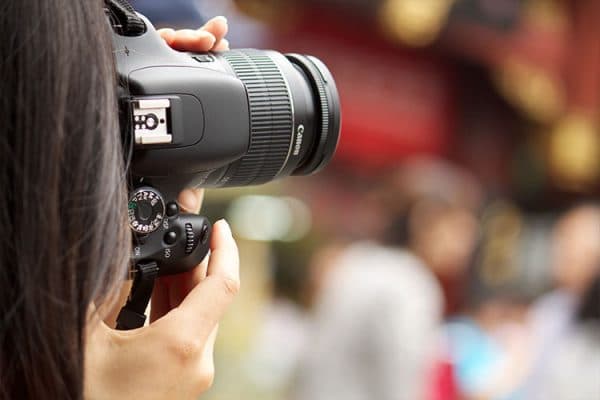
Photographers who wear contact lenses while operating a camera and taking photos have yet to complain about any negative effects that come with it. In addition, there has been no recommendation against using them while taking photos by professional eye doctors.
However, there is one potential problem to look out for while taking photographs with a digital camera whether glasses or contact lenses are used or not. Staring through the viewfinder for long periods of time can cause the eyes to become strained and should always be avoided by keeping both eyes open while looking through the viewfinder.
In conclusion, contact lenses seem to offer the perfect solution to photographers who require the use of prescription glasses and have previously suffered the negative side effects of wearing them during photo sessions. Out of all of the proposed solutions that have reached the market for photographers who experience these problems, contact lenses have been able to knock them out with the long list of benefits that come with them. As long as the contact lenses are the correct prescription as recommended by the eye doctor and are used safely by the photographer, there are no specific side effects that come with wearing them while operating a camera.
Related Questions

How Can I Find the Best Contact Lenses for Photography?
In order to find the best contact lenses, it is a good idea to seek out a professional eye doctor that can offer you a more personal experience that you require. To be more specific, you shouldn’t visit a cookie-cutter eye doctor that might not be able to tailor to your specific needs. Instead, you should do your proper research and possibly make an appointment to see someone who is experienced with photographers or any other kind of artists. Let the doctor know that you are a photographer as well as what you will be using the lenses for on a regular basis. This will help them give you helpful recommendations on how they should be used.
What Are Progressive Contact Lenses?
Progressive contacts have multiple focal lengths within the same lens that help the user correct their vision and adjust their focus at any distance. This is different from the average single vision contacts because they only have the ability to correct one single focus such as reading close-up, for example. Progressive lenses help the user see clearly with a combination of long distance, close-up, and mid-range correction as needed.
Can It Be Dangerous to Wear Glasses While Taking Photos?
There are no specific risks or dangers that have been directly associated with the use of eyeglasses while taking photographs. Even though doing this will not cause any damage to the eyes, it can become increasingly annoying for the photographer to adjust the frames and suffer from a constant obstruction of their view from the eye to the viewfinder of the camera. So far, these have been the only negative effects that are caused by wearing eyeglasses while using a digital camera.
